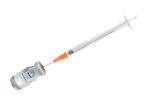Vaccines and sudden infant death: An analysis of the VAERS database 1990-2019 and review of the medical literature.
Source:https://pubmed.ncbi.nlm.nih.gov/34258234/
by Neil Z Miller
“all cause-of-death classifications associated with vaccination were eliminated.”
Abstract
Although there is considerable evidence that a subset of infants has an increased risk of sudden death after receiving vaccines, health authorities eliminated “prophylactic vaccination” as an official cause of death, so medical examiners are compelled to misclassify and conceal vaccine-related fatalities under alternate cause-of-death classifications. In this paper, the Vaccine Adverse Event Reporting System (VAERS) database was analyzed to ascertain the onset interval of infant deaths post-vaccination. Of 2605 infant deaths reported to VAERS from 1990 through 2019, 58 % clustered within 3 days post-vaccination and 78.3 % occurred within 7 days post-vaccination, confirming that infant deaths tend to occur in temporal proximity to vaccine administration. The excess of deaths during these early post-vaccination periods was statistically significant (p < 0.00001). A review of the medical literature substantiates a link between vaccines and sudden unexplained infant deaths. Several theories regarding the pathogenic mechanism behind these fatal events have been proposed, including the role of inflammatory cytokines as neuromodulators in the infant medulla preceding an abnormal response to the accumulation of carbon dioxide; fatal disorganization of respiratory control induced by adjuvants that cross the blood-brain barrier; and biochemical or synergistic toxicity due to multiple vaccines administered concurrently. While the findings in this paper are not proof of an association between infant vaccines and infant deaths, they are highly suggestive of a causal relationship.
Highlights
- •Additive or synergistic toxicity may occur following multivalent vaccination.
- •Infant deaths post-vaccination are often misclassified as SIDS or suffocation in bed.
- •Of all reported SIDS cases post-vaccination, 75 % occurred within 7 days (p < 0.00001).
- •Inflammatory cytokines in the infant medulla act as neuromodulators causing prolonged apneas.
- •Adjuvants that cross the BBB may induce fatal disorganization of respiratory control.
The Article:
There are 130 official ways for an infant to die. These official categories of death, sanctioned by the World Health Organization (WHO) and Centers for Disease Control and Prevention (CDC), are published in the International Classification of Diseases (ICD) [[1], [2], [3]]. When a baby dies, coroners must choose from among these 130 categories.
The official causes of death listed in the ICD include nearly every imaginable—and tragic—possibility. In fact, previous versions of the ICD listed “prophylactic inoculation and vaccination” as a separate cause-of-death category, with subcategories for deaths caused by specific vaccines. However, when the ICD was revised in 1979—and in subsequent updates to the ICD—all cause-of-death classifications associated with vaccination were eliminated. Since then, medical certifiers have been unable to list vaccination as an official cause of death because the ICD no longer contains a code for that possibility. This is odd because health authorities are aware that some children will become permanently disabled or die after receiving vaccines—the very reason Congress passed the National Childhood Vaccine Injury Act of 1986 (Public Law 99-660), which created the Vaccine Adverse Event Reporting System (VAERS) and established the National Vaccine Injury Compensation Program (VICP).
Many parents don’t realize that when they purchase vaccines, the cost is taxed and the money (75 cents per vaccine) goes into a trust fund managed by the Department of the Treasury to compensate them if and when those vaccines seriously injure or kill their babies. As of May 1, 2021, more than $4.5 billion was granted for thousands of injuries and deaths associated with vaccines. Numerous cases are still pending. Awards were issued for permanent injuries such as learning disabilities, seizure disorders, mental retardation, paralysis, and numerous deaths, including many that were initially misclassified as sudden infant death syndrome (SIDS) [4].
Since vaccine-related deaths are officially recognized by the federal government through the VICP but there are no official classifications for vaccine-related deaths in the ICD, an important question must be asked: What options are available to medical examiners for recording vaccine-related deaths?
1.2. Sudden Infant Death Syndrome (SIDS)
Prior to the introduction of organized vaccination programs, “crib death” was so rare that it was not mentioned in infant mortality statistics. In the United States, national immunization campaigns were expanded in the 1960s when several new vaccines were introduced and promoted. For the first time in history, most U.S. infants were required to receive several doses of DPT (diphtheria, pertussis, tetanus), polio, and measles vaccines. (The measles vaccine was administered at 9 months of age from 1963 to 1965 [5]). Mumps and rubella vaccines were also introduced in the 1960s. By 1969, an alarming epidemic of sudden unexplained infant deaths impelled researchers to create a new medical term—sudden infant death syndrome (SIDS) [6]. By 1972, SIDS had become the leading cause of post-neonatal mortality (infant deaths occurring between 28 days and 1 year of life) in the United States [7]. In 1973, the National Center for Health Statistics, operated by the CDC, created a new cause-of-death category to document deaths due to SIDS [8,9].
SIDS is defined as the sudden and unexpected death of an infant which remains unexplained after a thorough investigation, including performance of an autopsy and review of the clinical history [10]. Although there are no specific symptoms associated with SIDS, an autopsy often reveals congestion and edema of the lungs and inflammatory changes in the respiratory system [8,11].
In 1984, Congress held a hearing on vaccine safety. The suspected link between vaccines and sudden infant deaths was addressed. The following excerpt is from a statement made by a distraught grandmother testifying before the Congressional Committee [12]:
My name is Donna Gary. Our granddaughter, Lee Ann, was just 8 weeks old when her mother took her to the doctor for her routine checkup. That included her first DPT inoculation and oral polio vaccine. In all her entire 8 weeks of life this lovable, extremely alert baby had never produced such a blood-curdling scream as she did at the moment the shot was given. Neither had her mother ever before seen her back arch as it did while she screamed. She was inconsolable. Four hours later, Lee Ann was dead. “Crib death,” the doctor said—”SIDS.” “Could it be connected to the shot?” her parents implored. “No.” “But she just had her first DPT shot this afternoon. Could there possibly be any connection to it?” “No, no connection at all,” the emergency room doctor said definitely.
Are the statistics that the medical world loves to say, “There is no connection,” really accurate, or are they based on poor diagnoses, poor record keeping? What is being done to provide a safer vaccine? How are physicians and clinics going to be held accountable to see that parents are informed of the possible reactions? And how are those children who should not receive the vaccine to be identified before they are damaged or dead?
Throughout the 1980s, sudden infant deaths continued to skyrocket. Parental concerns about an apparent link between childhood vaccines and SIDS reached a fever pitch. Many parents were afraid to vaccinate their babies. Authorities sought to reassure parents that vaccines are safe and claimed that sudden unexplained infant deaths (SUID) following vaccines were merely coincidental.







